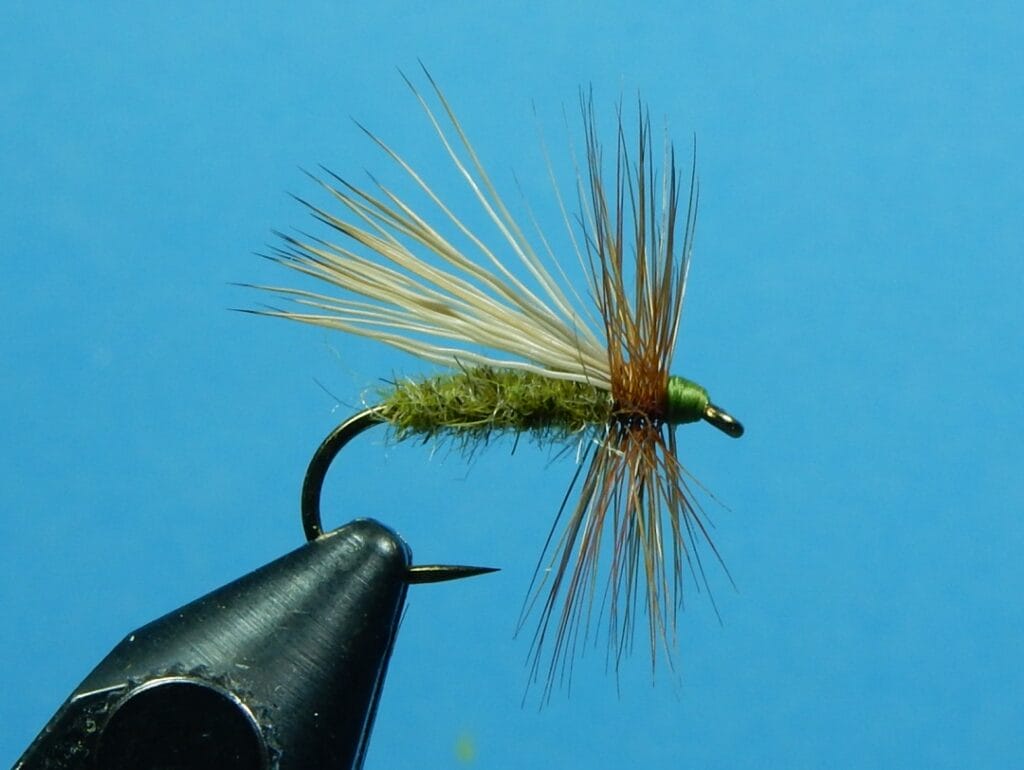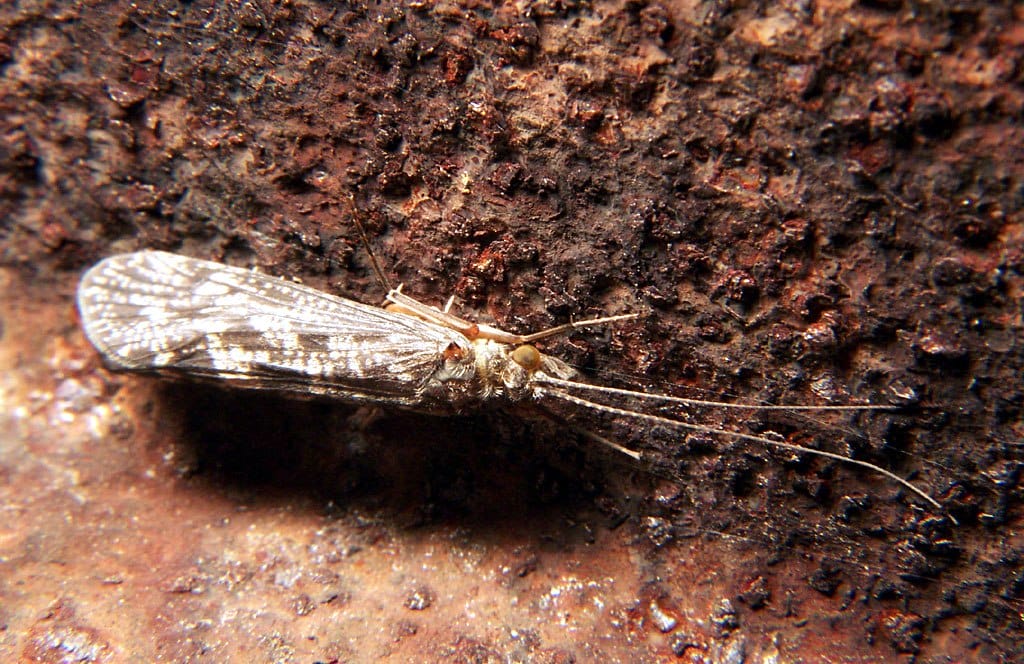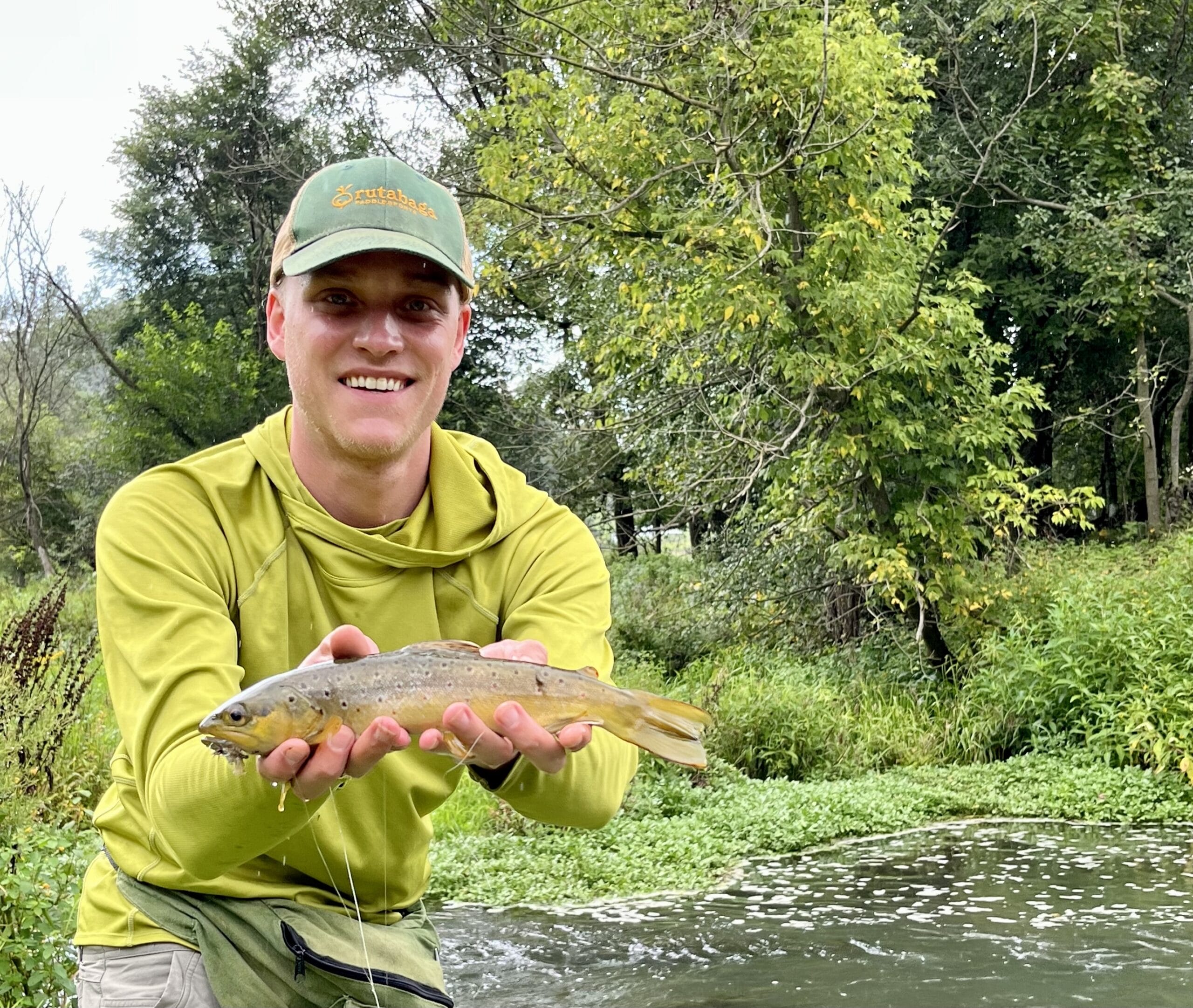May and June are great months for fishing caddis patterns in the driftless. This year, I noticed many fish receptive to caddis patterns stationed in shallow, fast water in broad daylight. Here are a few suggestions that might help you catch more trout on caddis patterns.
I am not a big fan of floating caddis patterns that ride low in the water or use CDC. All the caddis I see are riding high in the water while manically trying to get airborne before they are eaten, or are hovering around the surface near the bank.
One of the great things about fishing caddis is that a dead drift is good, but a bit of movement on the fly can be even better. I would like to tell you that I always do this with intentionality, but in reality, a trout’s willingness to hit a moving caddis can make up for a multitude of casting and mending errors.

I like a high-floating fully hackled, deer or elk hair caddis. And if I can get away with it, I like my caddis a size larger than the ones I see on the water. If I get a couple good floats over an actively rising fish and it takes a look and says, “I don’t think so,” then I tip my cap and size down.
Save your subtlety for mayfly imitations. When it comes to caddis, push the “easy button” first, and more often than not you will actually be able to see your fly and catch fish.
Unless the fish are just going bonkers, I almost always tie on an emerger on about 20 inches of 4x tippet off the back of the dry fly’s hook. This year I have been catching about half my fish on the emerger and about half on the adult.

If fish are really hammering the adult, I just cut the emerger off. Fish tend to strike the adult aggressively (although not always), but frequently take the emerger with a bit more restraint. I always try to remind myself to let the fish go up and down before setting the hook. Saying “God save the King” before setting isn’t the worst idea.
This may sound counterintuitive, but caddis are generally more effective on sunny days than on cloudy days. Every rule has its exceptions, but generally in May and June fish mayfly imitations on cloudy days and caddis on sunny ones.
I am writing this article on May 18 and the fishing has been so good at midday that I haven’t seriously started fishing in the evening yet. And I’m not really an early riser.
It is important to note that caddis do not need to be hatching steadily or in great numbers for caddis imitations to be effective. This year I have seen only one solid, honest-to-goodness hatch. But I have probably had six or seven days of above average caddis fishing and two of those days were borderline epic.
I think over the years I have probably overestimated the amount of caddis activity necessary to trigger feeding activity. I deeply regret this. Now if I see just a few caddis or a random trout rising here or there, I assume it is game-on and I am usually right. Trout just seem not to need much of an excuse to start looking for caddis.
Riffles or the heads of the run are usually the best spots because this is where caddis typically emerge. But don’t neglect the mid-run current seam or foam line. If it’s a good day fish will even set up bold as brass in the tail of the pool. These fish are totally exposed, so they will be edgy even if they are actively feeding.
There are zillions of caddis patterns that use every conceivable material and design to imitate the adult, emerger or pupa and larva. I use four.
For the adult I tie A.K. Best’s St. Vrain caddis (pictured above; not to be confused with his spent caddis). I like the fact that the body is a bit more distinct than the classic Troth pattern, but the Troth is probably just as good.
For the emerger I tie the classic Lafontaine sparkle emerger If I’m in a hurry, I tie Gary Borger’s Down and Dirty Caddis pupa.
For the larva, I tie the Real Deal Caddis Meal, but honestly this pattern looks like a lot of other bead-head caddis. When I am in a hurry, I skip the Fino Skin on the back.
My son Brendan has come up with a hybrid caddis larva/scud pattern tied with a black bead head, a purple sparkle collar and a green body tied a bit loose. He calls it The Greek Freak. Both the name and the Milwaukee Bucks color scheme were inspired by Giannis Antetokounmpo. It seems like a strange foundation to build a fly on, but he sure catches fish with it.
I tie all these flies in black, green and brown, usually on size 16-18 hooks.
Life is complicated, but fishing caddis doesn’t have to be.



